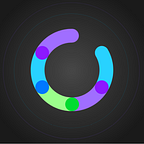Meta: With cloud computing technology strongly developed today, data storage has become simple. But more than that is Cudos — the Global Compute Network offers many outstanding features than a cloud can do.
Cloud computing has about 20 million servers and this number is growing rapidly. By adding to the network billions of electronic devices popular around the world, distributed computing is the bridge to the application of this series of revolutionary technologies. Cudos is one of the global cloud computing platforms. It brings many benefits to the users thanks to its preeminent features. The system is well-established and well-established to help users operate much more efficiently. So how does it work? Join us to find out right now!
What is the Cudos platform?
The Cudos platform supports all developers willing to contribute to the development of blockchain technology by developing innovations and applications for the Cudos network. Cudos will review all research proposals, and select top candidates to receive funding to develop and research their subject. Cudos will allow for a wide range of research topics, including DeFi and network enhancement among others.
Based on the above contributing incentives, the Cudos network will incorporate more closely and best improve the user experience.
How Cudos Works?
The smart contract written in the layer 1 network can call the Cudos smart contract, which is deployed in the same layer 1 network. Help require off-chain work computation or to access external data. Off-chain computation is performed in Cudos authentication nodes, which require a deposit of 2,000 Cudos in order to qualify. These nodes continuously listen for events in the Cudos smart contract, to see when a new computation request is made. This requirement consists of three main components:
- A target identifier
- Application hash identifier
- Any input required for that workload.
The Target Identifier refers to certain pieces of data used by Cudos nodes to decide when they need to run a job. This can be a set of hashes that identifies each individual node or some unique identifier that nodes use to decide if they need to run the job.
The application’s hash is used to decide which code the Cudos nodes need to run. That hash could reference an existing application from the Cudos dapp marketplace, or it could point to an external memory address where some of the code written by the requester was previously uploaded. Finally, the requirement for the Cudos contract may also include a list of inputs to be used by the code or the application that will run in the nodes.
These inputs can be passed directly in the request, if they are just short numbers or characters, but will usually be addressed to the external storage solution where the input data has been pre-uploaded. there.
When a node has heard of an event and decided that it should run the job, that would trigger its WebAssembly implementation. Note that listening to blockchain is already an off-chain process, so this process is not limited by the limitations of the blockchain anymore. When the execution starts, the node fetches the transferred inputs and sends API requests relevant to the market and application to run the compute workload.
After the result is received in each Cudos validation node, it may be necessary to check the consensus to return a unique result for the original requested smart contract on the Layer 1 blockchain. When that unique result (or the address where the result is stored) has been decided and sent to the Cudos smart contract, the original smart contract can fetch it.
With its clever operation combined with opening the door to contributions to the platform, Cudos becomes more and more great and deserves to be used. Join Cudos Global Compute Network now to experience!
Visit Cudos website here: https://www.cudos.org/
Author: Evrard
